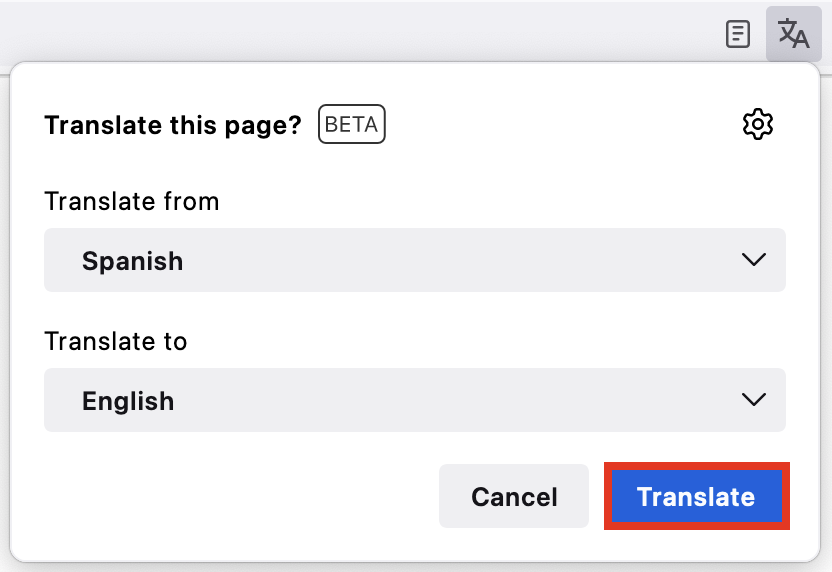Listen to an audio version of this article.
I first heard about ghost artists in the summer of 2017. At the time, I was new to the music-streaming beat. I had been researching the influence of major labels on Spotify playlists since the previous year, and my first report had just been published. Within a few days, the owner of an independent record label in New York dropped me a line to let me know about a mysterious phenomenon that was “in the air” and of growing concern to those in the indie music scene: Spotify, the rumor had it, was filling its most popular playlists with stock music attributed to pseudonymous musicians—variously called ghost or fake artists—presumably in an effort to reduce its royalty payouts. Some even speculated that Spotify might be making the tracks itself. At a time when playlists created by the company were becoming crucial sources of revenue for independent artists and labels, this was a troubling allegation.
At first, it sounded to me like a conspiracy theory. Surely, I thought, these artists were just DIY hustlers trying to game the system. But the tips kept coming. Over the next few months, I received more notes from readers, musicians, and label owners about the so-called fake-artist issue than about anything else. One digital strategist at an independent record label worried that the problem could soon grow more insidious. “So far it’s happening within a genre that mostly affects artists at labels like the one I work for, or Kranky, or Constellation,” the strategist said, referring to two long-running indie labels.* “But I doubt that it’ll be unique to our corner of the music world for long.”
By July, the story had burst into public view, after a Vulture article resurfaced a year-old item from the trade press claiming that Spotify was filling some of its popular and relaxing mood playlists—such as those for “jazz,” “chill,” and “peaceful piano” music—with cheap fake-artist offerings created by the company. A Spotify spokesperson, in turn, told the music press that these reports were “categorically untrue, full stop”: the company was not creating its own fake-artist tracks. But while Spotify may not have created them, it stopped short of denying that it had added them to its playlists. The spokesperson’s rebuttal only stoked the interest of the media, and by the end of the summer, articles on the matter appeared from NPR and the Guardian, among other outlets. Journalists scrutinized the music of some of the artists they suspected to be fake and speculated about how they had become so popular on Spotify. Before the year was out, the music writer David Turner had used analytics data to illustrate how Spotify’s “Ambient Chill” playlist had largely been wiped of well-known artists like Brian Eno, Bibio, and Jon Hopkins, whose music was replaced by tracks from Epidemic Sound, a Swedish company that offers a subscription-based library of production music—the kind of stock material often used in the background of advertisements, TV programs, and assorted video content.
For years, I referred to the names that would pop up on these playlists simply as “mystery viral artists.” Such artists often had millions of streams on Spotify and pride of place on the company’s own mood-themed playlists, which were compiled by a team of in-house curators. And they often had Spotify’s verified-artist badge. But they were clearly fake. Their “labels” were frequently listed as stock-music companies like Epidemic, and their profiles included generic, possibly AI-generated imagery, often with no artist biographies or links to websites. Google searches came up empty.
In the years following that initial salvo of negative press, other controversies served as useful distractions for Spotify: the company’s 2019 move into podcasting and eventual $250 million deal with Joe Rogan, for example, and its 2020 introduction of Discovery Mode, a program through which musicians or labels accept a lower royalty rate in exchange for algorithmic promotion. The fake-artist saga faded into the background, another of Spotify’s unresolved scandals as the company increasingly came under fire and musicians grew more emboldened to speak out against it with each passing year.
Then, in 2022, an investigation by the Swedish daily Dagens Nyheter revived the allegations. By comparing streaming data against documents retrieved from the Swedish copyright collection society STIM, the newspaper revealed that around twenty songwriters were behind the work of more than five hundred “artists,” and that thousands of their tracks were on Spotify and had been streamed millions of times.
Around this time, I decided to dig into the story of Spotify’s ghost artists in earnest, and the following summer, I made a visit to the DN offices in Sweden. The paper’s technology editor, Linus Larsson, showed me the Spotify page of an artist called Ekfat. Since 2019, a handful of tracks had been released under this moniker, mostly via the stock-music company Firefly Entertainment, and appeared on official Spotify playlists like “Lo-Fi House” and “Chill Instrumental Beats.” One of the tracks had more than three million streams; at the time of this writing, the number has surpassed four million. Larsson was amused by the elaborate artist bio, which he read aloud. It described Ekfat as a classically trained Icelandic beat maker who graduated from the “Reykjavik music conservatory,” joined the “legendary Smekkleysa Lo-Fi Rockers crew” in 2017, and released music only on limited-edition cassettes until 2019. “Completely made up,” Larsson said. “This is probably the most absurd example, because they really tried to make him into the coolest music producer that you can find.”
Besides the journalists at DN, no one in Sweden wanted to talk about the fake artists. In Stockholm, I visited the address listed for one of the ghost labels and knocked on the door—no luck. I met someone who knew a guy who maybe ran one of the production companies, but he didn’t want to talk. A local businessman would reveal only that he worked in the “functional music space,” and clammed up as soon as I told him about my investigation.
Even with the new reporting, there was still much missing from the bigger picture: Why, exactly, were the tracks getting added to these hugely popular Spotify playlists? We knew that the ghost artists were linked to certain production companies, and that those companies were pumping out an exorbitant number of tracks, but what was their relationship to Spotify?
For more than a year, I devoted myself to answering these questions. I spoke with former employees, reviewed internal Spotify records and company Slack messages, and interviewed and corresponded with numerous musicians. What I uncovered was an elaborate internal program. Spotify, I discovered, not only has partnerships with a web of production companies, which, as one former employee put it, provide Spotify with “music we benefited from financially,” but also a team of employees working to seed these tracks on playlists across the platform. In doing so, they are effectively working to grow the percentage of total streams of music that is cheaper for the platform. The program’s name: Perfect Fit Content (PFC). The PFC program raises troubling prospects for working musicians. Some face the possibility of losing out on crucial income by having their tracks passed over for playlist placement or replaced in favor of PFC; others, who record PFC music themselves, must often give up control of certain royalty rights that, if a track becomes popular, could be highly lucrative. But it also raises worrying questions for all of us who listen to music. It puts forth an image of a future in which—as streaming services push music further into the background, and normalize anonymous, low-cost playlist filler—the relationship between listener and artist might be severed completely.
How had it come to this? Spotify, after all, did not start out aiming to shape users’ listening behavior. In fact, in the early days, the user’s experience on the platform centered on the search bar. Listeners needed to know what they were looking for. The company’s CEO, Daniel Ek, is said to have been averse to the idea of an overly curated service. When the platform launched in Europe, in 2008, it positioned itself as a way to access music that was “better than piracy,” like a fully stocked iTunes library but accessed over the internet, all of it available via a monthly subscription. The emphasis was on providing entry to “A World of Music,” as an early ad campaign emphasized, with the tagline “Instant, simple and free.” Users could make their own playlists or listen to those made by others.
Like many other tech companies in the twenty-first century, Spotify spent its first decade claiming to disrupt an archaic industry, scaling up as quickly as possible, and attracting venture capitalists to an unproven business model. In its search for growth and profitability, Spotify reinvented itself repeatedly: as a social-networking platform in 2010, as an app marketplace in 2011, and by the end of 2012, as a hub for what it called “music for every moment,” supplying recommendations for specific moods, activities, and times of day. Spotify made its move into curation the next year, hiring a staff of editors to compile in-house playlists. In 2014, the company was increasing its investment in algorithmic personalization technology. This innovation was intended, as Spotify put it, to “level the playing field” for artists by minimizing the power of major labels, radio stations, and other old-school gatekeepers; in their place, it claimed, would be a system that simply rewarded tracks that streamed well. By the mid-2010s, the service was actively recasting itself as a neutral platform, a data-driven meritocracy that was rewriting the rules of the music business with its playlists and algorithms.
In reality, Spotify was subject to the outsized influence of the major-label oligopoly of Sony, Universal, and Warner, which together owned a 17 percent stake in the company when it launched. The companies, which controlled roughly 70 percent of the market for recorded music, held considerable negotiating power from the start. For these major labels, the rise of Spotify would soon pay off. By the mid-2010s, streaming had cemented itself as the most important source of revenue for the majors, which were raking in cash from Spotify’s millions of paying subscribers after more than a decade of declining revenue. But while Ek’s company was paying labels and publishers a lot of money—some 70 percent of its revenue—it had yet to turn a profit itself, something shareholders would soon demand. In theory, Spotify had any number of options: raising subscription rates, cutting costs by downsizing operations, or finding ways to attract new subscribers.
According to a source close to the company, Spotify’s own internal research showed that many users were not coming to the platform to listen to specific artists or albums; they just needed something to serve as a soundtrack for their days, like a study playlist or maybe a dinner soundtrack. In the lean-back listening environment that streaming had helped champion, listeners often weren’t even aware of what song or artist they were hearing. As a result, the thinking seemed to be: Why pay full-price royalties if users were only half listening? It was likely from this reasoning that the Perfect Fit Content program was created.
After at least a year of piloting, PFC was presented to Spotify editors in 2017 as one of the company’s new bets to achieve profitability. According to a former employee, just a few months later, a new column appeared on the dashboard editors used to monitor internal playlists. The dashboard was where editors could view various stats: plays, likes, skip rates, saves. And now, right at the top of the page, editors could see how successfully each playlist embraced “music commissioned to fit a certain playlist/mood with improved margins,” as PFC was described internally.
Editors were soon encouraged by higher-ups, with increasing persistence, to add PFC songs to certain playlists. “Initially, they would give us links to stuff, like, ‘Oh, it’s no pressure for you to add it, but if you can, that would be great,’ ” the former employee recalled. “Then it became more aggressive, like, ‘Oh, this is the style of music in your playlist, if you try it and it works, then why not?’ ”
Another former playlist editor told me that employees were concerned that the company wasn’t being transparent with users about the origin of this material. Still another former editor told me that he didn’t know where the music was coming from, though he was aware that adding it to his playlists was important for the company. “Maybe I should have asked more questions,” he told me, “but I was just kind of like, ‘Okay, how do I mix this music with artists that I like and not have them stand out?’ ”
Some employees felt that those responsible for pushing the PFC strategy did not understand the musical traditions that were being affected by it. These higher-ups were well versed in the business of major-label hitmaking, but not necessarily in the cultures or histories of genres like jazz, classical, ambient, and lo-fi hip-hop—music that tended to do well on playlists for relaxing, sleeping, or focusing. One of my sources told me that the attitude was “if the metrics went up, then let’s just keep replacing more and more, because if the user doesn’t notice, then it’s fine.”
Trying to share concerns about the program internally was challenging. “Some of us really didn’t feel good about what was happening,” a former employee told me. “We didn’t like that it was these two guys that normally write pop songs replacing swaths of artists across the board. It’s just not fair. But it was like trying to stop a train that was already leaving.”
Eventually, it became clear internally that many of the playlist editors—whom Spotify had touted in the press as music lovers with encyclopedic knowledge—were uninterested in participating in the scheme. The company started to bring on editors who seemed less bothered by the PFC model. These new editors looked after mood and activity playlists, and worked on playlists and programs that other editors didn’t want to take part in anymore. (Spotify denies that staffers were encouraged to add PFC to playlists, and that playlist editors were discontented with the program.) By 2023, several hundred playlists were being monitored by the team responsible for PFC. Over 150 of these, including “Ambient Relaxation,” “Deep Focus,” “100% Lounge,” “Bossa Nova Dinner,” “Cocktail Jazz,” “Deep Sleep,” “Morning Stretch,” and “Detox,” were nearly entirely made up of PFC.
Spotify managers defended PFC to staff by claiming that the tracks were being used only for background music, so listeners wouldn’t know the difference, and that there was a low supply of music for these types of playlists anyway. The first part of this argument was true: a statistical breakdown of the PFC rollout, shared over Slack, showed how PFC “streamshare”—Spotify’s term for percentage of total streams—was distributed across playlists for different activities, such as sleep, mindfulness, unwinding, lounging, meditation, calming down, concentrating, or studying. But the other half of management’s justification was harder to prove. Music in instrumental genres such as ambient, classical, electronic, jazz, and lo-fi beats was in plentiful supply across Spotify—more than enough to draw on to populate its playlists without requiring the addition of PFC.
PFC eventually began to be handled by a small team called Strategic Programming, or StraP for short, which in 2023 had ten members. Though Spotify denies that it is trying to increase PFC’s streamshare, internal Slack messages show members of the StraP team analyzing quarter-by-quarter growth and discussing how to increase the number of PFC streams. When Harper’s Magazine followed up with the company to ask why internal documents showed the team tracking the percentage of PFC content across hundreds of playlists if not to attend to the growth of PFC content on the platform, a spokesperson for the company said, “Spotify is data driven in all that we do.” And though Spotify told Harper’s that it does not “promise placement on any playlists” in any of its licensing agreements, when new PFC providers were brought on board, senior staffers would notify editors to attend to their offerings. “We’ve now onboarded Myndstream,” a StraP staffer wrote in one message. “Please prioritize adding from these as this is a new partner so they can get some live feedback.” That employee shared with the rest of the team a series of lists made by the new partner, sorting their tracks into collections titled “ambient piano covers,” “psilocybin (relax and breathe)” and “lofi originals.” A couple of months later, another team member posted a similar message:
Our new partner Slumber Group LLC is ready for their first releases. Make sure to have them set up in your Reverb filters for more snoozy content :)
(“Reverb” refers to an internal tool for managing tracks and playlists.)
The roster of PFC providers discussed internally was long. For years, Firefly Entertainment and Epidemic Sound dominated media speculation about Spotify’s playlist practices. But internal messages revealed they were just two among at least a dozen PFC providers, including companies with names like Hush Hush LLC and Catfarm Music AB. There was Queenstreet Content AB, the production company of the Swedish pop songwriting duo Andreas Romdhane and Josef Svedlund, who were also behind another mood-music streaming operation, Audiowell, which partnered with megaproducer Max Martin (who has shaped the sound of global pop music since the Nineties) and private-equity firm Altor. In 2022, the Swedish press reported that Queenstreet was bringing in more than $10 million per year. Another provider was Industria Works, a subsidiary of which is Mood Works, a distributor whose website shows that it also streams tracks on Apple Music and Amazon Music. Spotify was perhaps not alone in promoting cheap stock music.
In a Slack channel dedicated to discussing the ethics of streaming, Spotify’s own employees debated the fairness of the PFC program. “I wonder how much these plays ‘steal’ from actual ’normal’ artists,” one employee asked. And yet as far as the public was concerned, the company had gone to great lengths to keep the initiative under wraps. Perhaps Spotify understood the stakes—that when it removed real classical, jazz, and ambient artists from popular playlists and replaced them with low-budget stock muzak, it was steamrolling real music cultures, actual traditions within which artists were trying to make a living. Or perhaps the company was aware that this project to cheapen music contradicted so many of the ideals upon which its brand had been built. Spotify had long marketed itself as the ultimate platform for discovery—and who was going to get excited about “discovering” a bunch of stock music? Artists had been sold the idea that streaming was the ultimate meritocracy—that the best would rise to the top because users voted by listening. But the PFC program undermined all this. PFC was not the only way in which Spotify deliberately and covertly manipulated programming to favor content that improved its margins, but it was the most immediately galling. Nor was the problem simply a matter of “authenticity” in music. It was a matter of survival for actual artists, of musicians having the ability to earn a living on one of the largest platforms for music. PFC was irrefutable proof that Spotify rigged its system against musicians who knew their worth.
In 2023, on a summer afternoon in Brooklyn, I met up with a jazz musician in a park. We talked about the recent shows we had seen, our favorite and least favorite venues, the respective pockets of the New York music scene we moved through. He spoke passionately about his friends’ music and his most cherished performance spaces. But our conversation soon turned to something else: his most recent side gig, making jazz for a company that was described, in one internal Spotify document, as one of its “high margin (PFC) licensors.”
He wasn’t familiar with the term PFC, but his tracks have been given prominent placement on some of Spotify’s most PFC-saturated chill-jazz playlists. Like many musicians in his position, there was a lot he didn’t know about the arrangement. He had signed a one-year contract to make anonymous tracks for a production company that would distribute them on Spotify. He called it his “Spotify playlist gig,” a commitment he also called “brain-numbing” and “pretty much completely joyless.” And while he didn’t quite understand the details of his employer’s relationship with Spotify, he knew that many of his tracks had landed on playlists with millions of followers. “I just record stuff and submit it, and I’m not really sure what happens from there,” he told me.
As he described it, making new PFC starts with studying old PFC: it’s a feedback loop of playlist fodder imitated over and over again. A typical session starts with a production company sending along links to target playlists as reference points. His task is to then chart out new songs that could stream well on these playlists. “Honestly, for most of this stuff, I just write out charts while lying on my back on the couch,” he explained. “And then once we have a critical mass, they organize a session and we play them. And it’s usually just like, one take, one take, one take, one take. You knock out like fifteen in an hour or two.” With the jazz musician’s particular group, the session typically includes a pianist, a bassist, and a drummer. An engineer from the studio will be there, and usually someone from the PFC partner company will come along, too—acting as a producer, giving light feedback, at times inching the musicians in a more playlist-friendly direction. The most common feedback: play simpler. “That’s definitely the thing: nothing that could be even remotely challenging or offensive, really,” the musician told me. “The goal, for sure, is to be as milquetoast as possible.”
This wasn’t a scam artist with a master plan to steal prime playlist real estate. He was just someone who, like other working musicians today, was trying to cobble together a living. “There are so many things in music that you treat as grunt work,” he said. “This kind of felt like the same category as wedding gigs or corporate gigs. It’s made very explicit on Spotify that these are background playlists, so it didn’t necessarily strike me as any different from that. . . . You’re just a piece of the furniture.”
The jazz musician asked me not to identify the name of the company he worked for; he didn’t want to risk losing the gig. Throughout our conversation, though, he repeatedly emphasized his reservations about the system, calling it “shameful”—even without knowledge of the hard details of the program, he understood that his work was creating value for a company, and a system, with little regard for the well-being of independent artists. In general, the musicians working with PFC companies I spoke with were highly critical of the arrangement. One musician who made electronic compositions for Epidemic Sound told me about how “the creative process was more about replicating playlist styles and vibes than looking inward.” Another musician, a professional audio engineer who turned out ambient recordings for a different PFC partner, told me that he stopped making this type of stock music because “it felt unethical, like some kind of money-laundering scheme.”
According to a former Spotify employee, the managers of the PFC program justified its existence internally in part by claiming that the participating musicians were true artists like any other—they had simply chosen to monetize their creative work in a different way. (A Spotify spokesperson confirmed this, pointing out that “music that an artist creates but publishes under a band name or a pseudonym has been popular across mediums for decades.”) But the PFC musicians I spoke to told a different story. They did not consider their work for these companies to be part of their artistic output. One composer I spoke with compared it to the use of soundalikes in the advertising business, when a production company asks an artist to write and record a cheaper version of a popular song.
“It’s kind of like taking a standardized test, where there’s a range of right answers and a far larger range of wrong answers,” the jazz musician said. “It feels like someone is giving you a prompt or a question, and you’re just answering it, whether it’s actually your conviction or not. Nobody I know would ever go into the studio and record music this way.”
All this points to a disconcerting context collapse for musicians—to the way in which being an artist and the business of background music are increasingly entwined, and the distinctions of purpose increasingly blurred. PFC is in some ways similar to production music, audio made in bulk on a work-for-hire basis, which is often fully owned by production companies that make it easily available to license for ads, in-store soundtracks, film scores, and the like. In fact, PFC seems to encompass repurposed production-music catalogues, but it also appears to include work commissioned more directly for mood playlists, as suggested by one the Spotify StraP team’s discussion of an ongoing “wishlist for PFC partners” on Slack.
Production music is booming today thanks to a digital environment in which a growing share of internet traffic comes from video and audio. Generations of YouTube and TikTok influencers strive to avoid the complicated world of sync licensing (short for music synchronization licensing, the process of acquiring rights to play music in the background of audiovisual content) and the possibility of content being removed for copyright violations. Companies like Epidemic Sound purport to solve this problem, claiming to simplify sync licensing by offering a library of pre-cleared, royalty-free production music for a monthly or yearly subscription fee. They also provide in-store music for retail outlets, in the tradition of muzak.
As Epidemic grew, it started to behave like a record label. “Similar to any label, we were doing licenses with DSPs,” one former employee told me, referring to digital service providers such as Amazon Music, Apple Music, and Spotify. “Epidemic’s content is primarily being made for sync, so it’s primarily non-lyrical. This includes ambient content, lo-fi beats, classical compositions. Things a YouTube creator might put over a landscape video. And this content tends to also do well in playlists such as ‘Deep Focus,’ for example, on Spotify.”
Unsurprisingly, one of the first venture-capital firms to invest in Spotify, Creandum, also invested early in Epidemic. In 2021, Epidemic raised $450 million from Blackstone Growth and EQT Growth, increasing the company’s valuation to $1.4 billion. It is striking, even now, that these venture capitalists saw so much potential for profit in background music. “This is, at the end of the day, a data business,” the global head of Blackstone Growth said at the time. The Spotify–Epidemic corporate synergies reflect how streaming has flattened differences across music. The industry has contributed to a massive wave of consolidation: different music-adjacent industries and ecosystems that previously operated in isolation all suddenly depend on royalties from the same platforms. And it has led to the blurring of aesthetic boundaries as well. The musician who made tracks for Epidemic Sound and ended up on many PFC-heavy playlists told me that he was required to release the tracks under his real artist name, on his preexisting Spotify page. “My profile on Spotify picked up a lot once my Epidemic compositions found their way onto playlists,” he said. “The sad thing is that rarely results in playlist listeners digging deeper into the artist of a track they hear or like.”
The Epidemic artist explained how each month started with the company presenting a new playlist it had created. “You are then to compose however many tracks you and Epidemic agree on, drawing ‘inspiration’ from said playlist,” he told me. “Ninety-eight percent of the time, these playlists had very little to do with my own artistic vision and vibe but, rather, focused on what Epidemic felt its subscribers were after. So essentially, I was composing bespoke music. This annoyed the fuck out of me.”
But at the end of the day, he said, it was still a paycheck: “I did it because I needed a job real bad and the money was better than any money I could make from even successful indie labels, many of which I worked with,” he told me. “Honestly, I had no idea which tracks I made would end up doing well. . . . Every track I made for Epidemic was based on their curated playlist.”
While it’s true that the business of sync licensing can be complicated, musicians from the Ivors Academy, a British advocacy organization for songwriters and composers, say that the “frictions” companies like Epidemic seek to smooth out are actually hard-won industry protections. “Simplicity is overrated when it comes to your rights,” Kevin Sargent, a composer of television and film scores, told me. In claiming to “simplify” the mechanics of the background-music industry, Epidemic and its peers have championed a system of flat-fee buyouts. The Epidemic composer I spoke with said that his payments were routinely around $1,700, and that the tracks were purchased by Epidemic as a complete buyout. “They own the master,” he told me. Epidemic’s selling point is that the music is royalty-free for its own subscribers, but it does collect royalties from streaming services; these it splits with artists fifty-fifty. But in the case of the musician I spoke with, the streaming royalty checks from tracks produced for Epidemic Sound were smaller than those for his non-Epidemic tracks, and artists are not entitled to certain other royalties: to refine its exploitative model, Epidemic does not work with artists who belong to performance-rights organizations, the groups that collect royalties for songwriters when their compositions are played on TV or radio, online, or even in public. “It’s essentially a race to the bottom,” the production-music composer Mat Andasun told me.
The musician who made ambient tracks for one of the PFC partner companies told me about power imbalances he experienced on the job. “There was a fee paid up front,” he explained to me. “It was like, ‘We’ll give you a couple hundred bucks. You don’t own the master. We’ll give you a percentage of publishing.’ And it was basically pitched to me that I could do as many of these tracks as I wanted.” In the end, he recorded only a handful of tracks for the company, released under different aliases, and made a couple thousand dollars. The money seemed pretty good at first, since each track took only a few hours. But as a couple of the tracks took off on Spotify, one garnering millions upon millions of streams, he started to see how unfair the deal was in the long term: the tracks were generating far more revenue for Spotify and the ghost label than he would ever see, because he owned no part of the master and none of the publishing rights. “I’m selling my intellectual property for essentially peanuts,” he said.
He quickly succumbed to the feeling that something was wrong with the arrangement. “I’m aware that the master recording is generating much more than I’m getting. Maybe that’s just business, but it’s so related to being able to get that amount of plays. Whoever can actually get you generating that amount of plays, they hold the power,” the musician told me.
“It feels pretty weird,” he continued. “My name is not on it. There’s no credit. There’s not a label on it. It’s really like there’s nothing—no composer information. There’s a layer of smoke screen. They’re not trying to have it be traceable.”
A model in which the imperative is simply to keep listeners around, whether they’re paying attention or not, distorts our very understanding of music’s purpose. This treatment of music as nothing but background sounds—as interchangeable tracks of generic, vibe-tagged playlist fodder—is at the heart of how music has been devalued in the streaming era. It is in the financial interest of streaming services to discourage a critical audio culture among users, to continue eroding connections between artists and listeners, so as to more easily slip discounted stock music through the cracks, improving their profit margins in the process. It’s not hard to imagine a future in which the continued fraying of these connections erodes the role of the artist altogether, laying the groundwork for users to accept music made using generative-AI software.
“I’m sure it’s something that AI could do now, which is kind of scary,” one of the former Spotify playlist editors told me, referring to the potential for AI tools to pump out audio much like the PFC tracks. The PFC partner companies themselves understand this. According to Epidemic Sound’s own public-facing materials, the company already plans to allow its music writers to use AI tools to generate tracks. In its 2023 annual report, Epidemic explained that its ownership of the world’s largest catalogue of “restriction-free” tracks made it “one of the best-positioned” companies to allow creators to harness “AI’s capabilities.” Even as it promoted the role that AI would play in its business, Epidemic emphasized the human nature of its approach. “Our promise to our artists is that technology will never replace them,” read a post on Epidemic’s corporate blog. But the ceaseless churn of quickly generated ghost-artist tracks already seems poised to do just that.
Spotify, for its part, has been open about its willingness to allow AI music on the platform. During a 2023 conference call, Daniel Ek noted that the boom in AI-generated content could be “great culturally” and allow Spotify to “grow engagement and revenue.” That’s an unsurprising position for a company that has long prided itself on its machine-learning systems, which power many of its recommendations, and has framed its product evolution as a story of AI transformation. These automated recommendations are, in part, how Spotify was able to usher in another of its most contentious cost-saving initiatives: Discovery Mode, its payola-like program whereby artists accept a lower royalty rate in exchange for algorithmic promotion. Like the PFC program, tracks enrolled in Discovery Mode are unmarked on Spotify; both schemes allow the service to push discount content to users without their knowledge. Discovery Mode has drawn scrutiny from artists, organizers, and lawmakers, which highlights another reason the company may ultimately prefer the details of its ghost-artist program to remain obscure. After all, protests for higher royalty rates can’t happen if playlists are filled with artists who remain in the shadows.
Liz Pelly
is the author of Mood Machine: The Rise of Spotify and the Costs of the Perfect Playlist, from which this excerpt is taken. It will be published in January by One Signal Publishers, an imprint of Atria Books.










Well in english all words include vowels and you are excluding every vowel except
uand(sometimes) yscrabble fan?